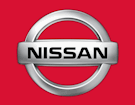The author has 30+ years of automotive experience and has assembled the most extensive collection of symbols and warning lights anywhere (over 1,000!) and can help you open and start any keyless start car with a dead key fob battery. BA, St. Joseph's, ME: MS, RPI, NY
Most commented posts
- Information Displays and Message Centers — 10 comments
Author's posts
Dodge Dashboard Symbols Update Given that the company has only two models, the Hornet and the Durango, it is a huge surprise to find that the 2024 Dodge dashboard symbols update will add 44 new symbols to the page, nearly doubling the total count. At this writing we’re only about half way through! Primarily, we …
Continue reading
Permanent link to this article: https://dashboardsymbols.com/2024/08/dodge-dashboard-symbols-update-adds-an-astounding-44-new-lights/
New Chevrolet Video We recently added a new Chevrolet video to our YouTube channel. It is specifically for 2019 through 2024 Equinox keyless start models with a dead key fob battery. And yes there is a way to get in and get going. The process will also work with 2017 and later Cruze models, as …
Continue reading
Permanent link to this article: https://dashboardsymbols.com/2024/08/we-dropped-a-new-chevrolet-video-covering-equinox-cruze-sonic-and-blazer-models/
Polestar Dashboard Symbols Update Given that the company added two new models, the Polestar 3 and 4, to compliment the Polestar 2, it isn’t a big surprise to find that the 2024 Polestar dashboard symbols update added 26 new symbols to the page. A whole lot of the additions are black and white versions of …
Continue reading
Permanent link to this article: https://dashboardsymbols.com/2024/08/polestar-dashboard-symbols-update-adds-26-new-lights/
Hornet back up start spot Dodge introduced a new model in 2023 and with it came a new back up start spot. The Hornet back up start spot is inside the front cup holder (right). Push button or keyless start cars and trucks need a location to touch or drop the key fob in the …
Continue reading
Permanent link to this article: https://dashboardsymbols.com/2024/08/hornet-back-up-start-spot-is-new-with-the-model/
Nissan key fob battery We recently added a new video replacing a Nissan key fob battery, the three-button fob version. That video is here and below. The process is nearly identical to the four-button fob version, but deserves its own treatment. The video has been added to our Nissan and Infiniti page here. Overall, we …
Continue reading
Permanent link to this article: https://dashboardsymbols.com/2024/08/replacing-a-nissan-key-fob-battery/
Chrysler Dashboard Symbols Update Despite the company selling only two models, the 2024 Chrysler dashboard symbols update still manages to add seven new symbols to the page. Most are the result of adding new colors to existing symbols. As a for instance, there are now green and white Lane Departure Indicators. They add to what …
Continue reading
Permanent link to this article: https://dashboardsymbols.com/2024/08/chysler-dashboard-symbols-update-adds-seven-new-lights/
A 4th Door Handle In 2023, Mercedes-Benz added a 4th door handle that hides the key hole to its model line up. Thus far they are seen only on the CLE Cabriolet and 2024 GLC models. Effectively, it continues a trend is to move away from the need to remove a piece of the door …
Continue reading
Permanent link to this article: https://dashboardsymbols.com/2024/08/mercedes-benz-adds-a-4th-door-handle-style/




Polestar dashboard symbols update adds 26 new lights!
Polestar Dashboard Symbols Update Given that the company added two new models, the Polestar 3 and 4, to compliment the Polestar 2, it isn’t a big surprise to find that the 2024 Polestar dashboard symbols update added 26 new symbols to the page. A whole lot of the additions are black and white versions of …
Continue reading